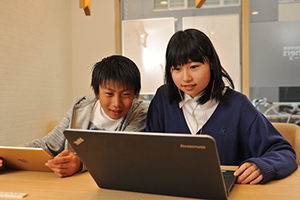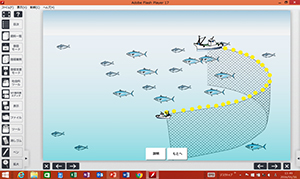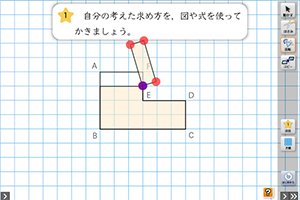
You can casually study anytime and anywhere with a tablet. ©SuRaLa Net
You may think, "School lessons are boring." Students in Japan actually feel the same, according to research results that show some do not enjoy classes. For many of them, "I want more interesting lessons from my teachers" and "I want to study at my own pace" are statements describing their feelings. The recent introduction of e-textbooks is a likely key to fixing this situation. Let's look at e-textbooks in Japan.
Starting with Wider Use of Personal Computers and Tablets
Schools in Japan are promoting a policy of using personal computers and tablets in the classroom. Today, in elementary and junior high schools, 1 out of every 6.4 students is assigned a personal computer or tablet. They are aiming to get one of these machines into each student's hands by 2020.

Studying with a personal computer or tablet is common. ©SuRaLa Net
Being More Motivated with Educational Materials Just as Fun as Games!
What is so good about e-textbooks? One good point is that students can learn at their own level. Each child in a group lesson will inevitably understand the lesson to different degrees. But if the same children use e-textbooks, they can tackle different problems covered in the lesson to proceed at their own pace.
Another point is that e-textbooks can show how things work in multimedia (including audio and video) explanations, which are easier to understand than explanations that only use words. Also, e-textbooks allow students to interact with diagrams, graphs and other content on the screen as they study. That helps them to develop their ability to think and get answers by themselves. So, as designed, students studying at home with e-textbooks likewise get better results.

Educational material for studying the geography of Japan in English. You can check whether you remember the important parts by first highlighting the parts with a marker and then hiding them under a color overlay, as shown above. You can also record your voice to check your pronunciation. ©Tokyo Shoseki

Educational material for social studies: learning about the fishing industry. It uses animation to explain how "purse seine fishing" works. The animation makes the content easier to understand, which might be hard to understand from a text-only explanation. ©Tokyo Shoseki

Educational material for math: learning about the area of a shape. You can select functions from the menu on the right to cut a shape with scissors, copy a shape and make the same shape again. In this way, you develop the ability to think on your own. ©Tokyo Shoseki
An interesting feature that is found only in e-textbooks is the ability to learn with fun activities similar to games. One popular style of learning among children in Japan is to answer questions while having a dialog with a game character. Online educational materials with this learning style are used by more than 100 schools and 600 jukus (a juku is a business that offers tutorial services). The positive reactions from children who have actually used these materials include "I don't lose interest in studying because my game character teaches me" and "The explanations are easy to understand and I can concentrate on studying." And according to reports, many of the children who began using these e-textbooks got better grades later. By including elements of a game, e-textbooks can motivate children to study harder, even for a subject that they do not like.

Math question about fractions. After the blanks are filled in with the correct numbers, the numbers are circled, and the game character interactively expresses delight. Students may feel more motivated by such a response. ©SuRaLa Net
The Appeal of Anyone Being Able to Study Anytime, Anywhere
E-textbooks have another good point. Anyone who has a personal computer or tablet can take the same lessons anytime, anywhere.
Lately, non-Japanese children have also been studying with e-textbooks from Japan. An example is Southeast and Southwest Asia, where some areas suffer from poor environments for studying because, for example, there are not enough teachers and what is taught varies from school to school. To improve this situation, a juku that uses e-textbooks was established in Sri Lanka in 2015. Over 100 children applied to enter. Academic ability increased in many of the children who actually took lessons. So, the number of jukus increased to 13. There is even a plan to open more new jukus.

E-textbooks from Japan are popular in other countries (e.g., Sri Lanka) in the world. ©SuRaLa Net
Doesn't it feel strange to think about children in places far from Japan studying with Japanese e-textbooks just as Japanese children do? But, situations like this will be common in the future. So when you have a chance, take a look at an e-textbook from Japan.